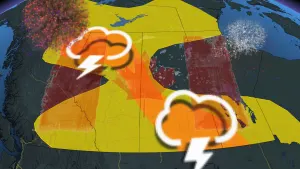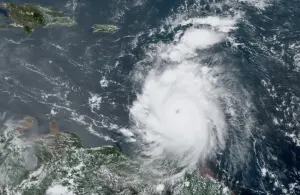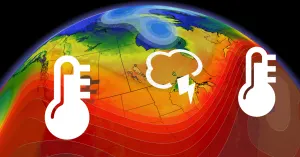
New form of ice with similarities to liquid water discovered
The discovery of a new form of ice may help scientists better understand water on Earth and in outer space.
A new form of lab-created ice, medium-density amorphous ice (MDA), could hold clues about how ice interacts with nature.
MDA is the third form of amorphous ice discovered: the first, in its low-density form, was found in the 1930s, followed by the high-density form, documented about fifty years later. It makes MDA a "happy medium" between the two, the authors say in a statement.
The findings are detailed in a paper appearing in the journal Science.
Researchers manufactured MDA using a ball-milling process, which involves shaking ordinary ice alongside steel balls in a jar cooled to -200 degrees Centigrade.
Unlike all other known ice, MDA has a density similar to water, resembles water in solid form, and bears a property not found in other ice: When it heats up and recrystallizes to ordinary ice, it releases an "extraordinary" amount of heat, which could influence the activation of tectonic motions in faraway places.
While rare on Earth, amorphous ice is common in space and may be present in the ice moons of the outer solar system.
“Amorphous ice, in general, is said to be the most abundant form of water in the universe," Professor Angelos Michaelides of Cambridge's Yusuf Hamied Department of Chemistry and lead author on the study said in a statement.
"The race is now on to understand how much of it is MDA and how geophysically active MDA is.”
Mysterious water
Water, one of the most abundant molecules on Earth, contains several puzzling properties. For starters, it is most dense at around 4°C, and the more it freezes, the less dense it becomes. It's this property that helps ice to float. And, as Sci Tech Daily explains, water becomes easier to compress the more you squeeze it, unlike many other substances.
Then there's its point of 100°C, unusually high given its small molecular weight. "Water is the foundation of all life. Our existence depends on it, we launch space missions searching for it, yet from a scientific point of view it is poorly understood," Senior author Professor Christoph Salzmann of UCL Chemistry said in a statement.
"We know of 20 crystalline forms of ice, but only two main types of amorphous ice have previously been discovered, known as high-density and low-density amorphous ices. There is a huge density gap between them, and the accepted wisdom has been that no ice exists within that density gap. Our study shows that the density of MDA is precisely within this density gap and this finding may have far-reaching consequences for our understanding of liquid water and its many anomalies."










